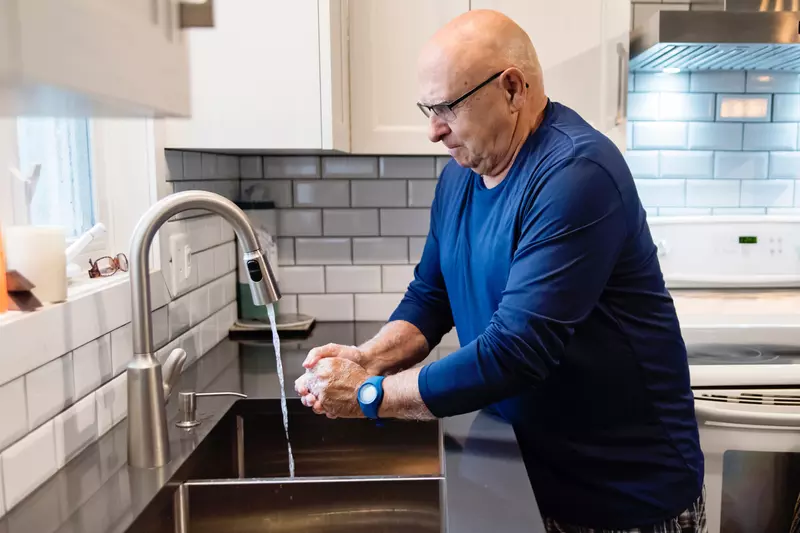- AdventHealth

Choose the health content that’s right for you, and get it delivered right in your inbox.
Vitamin C. Rest. Getting your annual flu shot. These are great ways to help prevent cold and flu, but one of the best ways to avoid spreading germs and coming down with these bugs lies right in the palm of your hands, with a little soap and water or alcohol-based sanitizer.
Yes — we’re talking about hand-washing.
Since many common diseases and conditions like common colds, stomach bugs and flu are passed to others through the hands, keeping them clean with improved hand-washing habits is one of the best things you can do to prevent them, according to the Centers for Disease Control and Prevention (CDC).
How Germs Spread Through Hands
Think of how many things your hands touch on any given day: a lot.
Here are some ways that your hands can be a source of the germs that make us sick (CDC):
- Frequent touches to the eyes, nose, and mouth (often without even realizing it)
- Transmission of germs from hands to foods and drinks during preparation or while eating, where germs can multiply under certain conditions
- Germs from unwashed hands can be transferred to handrails, table tops or toys and then to another person's hands.
Proof That Hand-Washing Works to Keep You Healthy
The numbers speak for themselves. Hand-washing works to stop the spread of some of the most common illnesses. According to the CDC, hand-washing is shown to decrease:
- The number of people affected by diarrhea by 31%
- Diarrheal illness in people with weakened immune systems by 58%
- Respiratory illnesses (like colds) by 16-21%
When You Should Wash Your Hands
Did you know there are at least ten instances each day that you should be washing your hands?
The CDC outlines when hand hygiene should come into play.
Before:
- Caring for someone who is sick
- Preparing and eating food
- Treating a cut or wound
After:
- Blowing your nose, coughing or sneezing
- Changing diapers or helping a child use the bathroom
- Preparing food
- Touching an animal, feeding an animal or handling animal waste
- Touching garbage
- Touching pet food or pet treats
- Using the bathroom
How You Should Wash Your Hands
Believe it or not, there is a proper way to wash your hands. It might seem simple, but the CDC suggests a five-step hand-washing technique to blast those microscopic bugs that could be lingering.
- Wet your hands
- Use clean, running water (warm or cold)
- Turn off the tap and apply soap
- Lather
- Rubbing your hands together and lather up the soap
- Lather the backs of your hands, between your fingers and under your nails
- Scrub
- Scrub for at least 20 seconds
- Tip: Hum the Happy Birthday song from beginning to end twice
- Rinse
- Turn the water back on and rinse well under the clean, running water
- Dry
- Use a clean towel or air-dry your hands
When You Should Use Hand Sanitizer
Hand-washing with soap and water is preferred, but if you're in a sticky spot without it, hand sanitizer is the second-best alternative to get your hands clean.
When soap and water are unavailable, a 60% alcohol-based hand sanitizer is another way to decrease the number of germs on your hands. It is important to note that sanitizers are not as effective as hand-washing (especially if hands are visibly dirty or greasy), often leaving some germs still on the hands.
How to use hand sanitizers:
- Apply the product to the palm of one hand; the label will tell you the correct amount to use
- Rub your hands together
- Rub the product over all surfaces of your hands and fingers until your hands are dry
Remember, preventing your next cold could be a hand-wash away. Go into your next cold and flu season armed with hand hygiene habits to keep you and your family safe and healthy.



